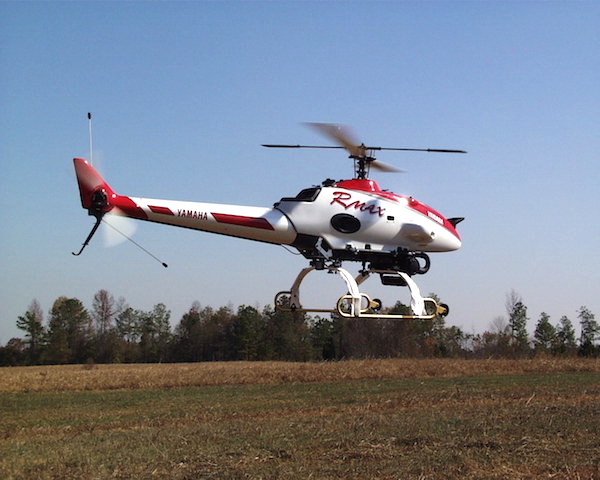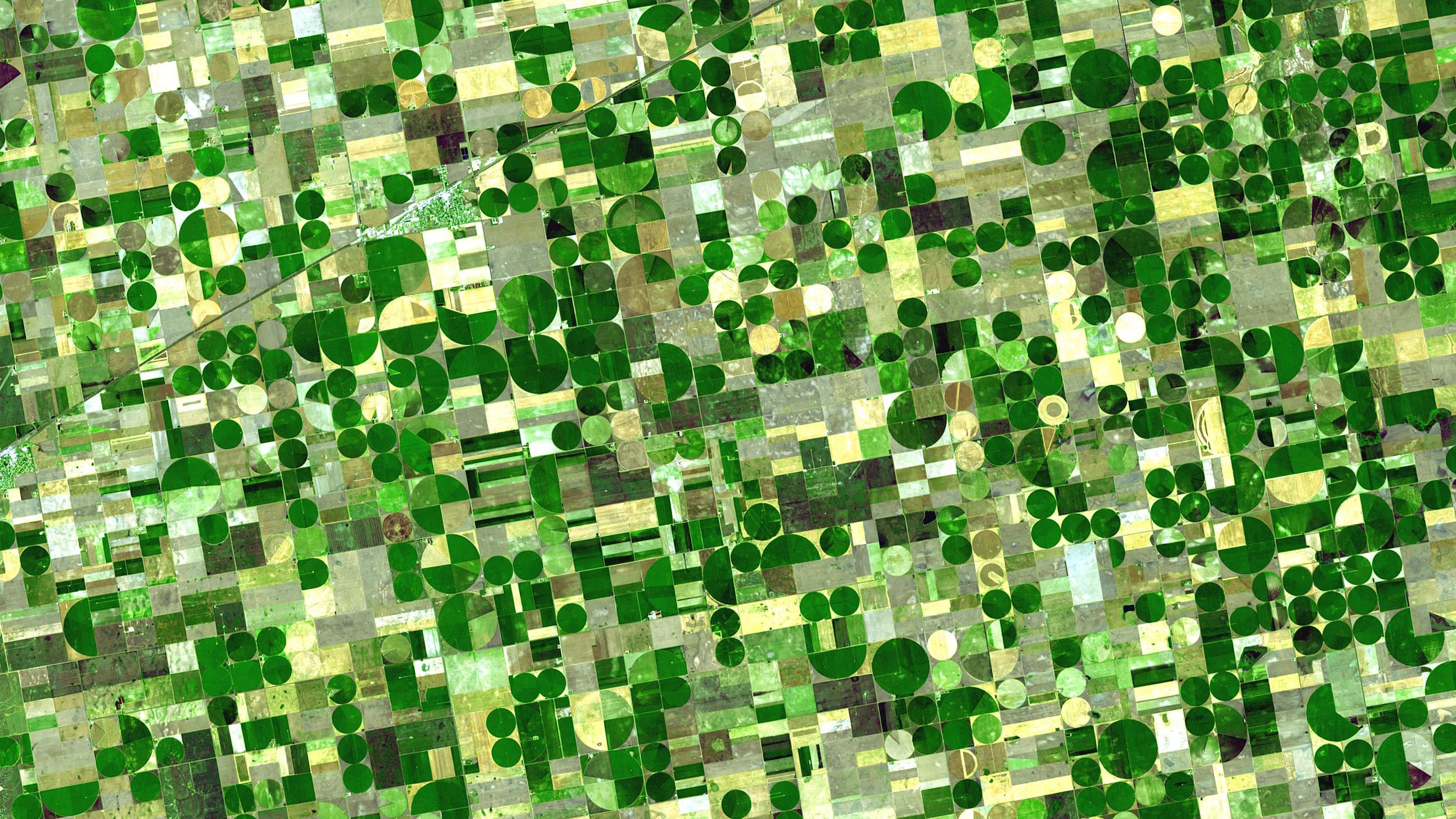Could Drones More Accurately Disperse Pesticides?
Over 7.7 billion pounds of pesticides are used around the world every year to spray fruits, vegetables, grains and other crops. But a lot of this pesticide is wasted, drifting away from its intended targets and into water, soil and the atmosphere. This pesticide drift is a problem; in fact, the Pesticide Action Network (PAN) recently estimated that more than 95 percent of the sprayed material may miss the intended target, wasting the expensive agricultural chemicals and raising the toxicity risk for both people and wildlife living near farmlands.

Yamaha’s RMAX drone was recently approved for applying pesticides in the U.S. (Visual by Gtuav/Wikimedia Commons)
To reduce the waste and lower its impact on the environment, researchers at MIT are offering a technological solution that could improve the precision with which pesticides are applied and help farmers avoid potentially hazardous blanket dispersal. Their study, published earlier this year in the journal Precision Agriculture, offers a system that matches mechanized drones with software that features an optimizing algorithm to help direct more accurate dispersal of pesticides.
“A lot of people just disperse pure chemicals with planes or helicopters. You could do this with drones,” said Noel Elman, a former research scientist at MIT and founder of GearJump Technologies, which is currently developing the technology.
Elman and a group of MIT students devised a system that integrates satellite imagery from Google Earth with custom designed software. By taking into account environmental conditions like wind, temperature and humidity, the program is able to calculate the most efficient locations for a drone to drop small payloads of pesticides. The software also calculates the most efficient automated flight plan to deliver the pesticide, which is contained in biodegradable controlled release devices that Elman calls “ordnance.”
“Instead of dispersing pure chemicals, we disperse ordnance, or tiny bombs that slowly disperse insecticides,” Elman said. “We’re not using a Soviet approach of fumigating and killing everything.”
While satellite and airborne imagery have been used to improve the efficiency of agricultural production for decades, interest in drones — or unmanned aerial vehicles (UAVs) — for imaging fields and improving farming techniques is a newer — and to many, an exciting — phenomenon.
UAVs have been used to characterize vineyards in Italy and image olive trees in Spain, but it’s Japan that has led the way in using the unmanned aircraft to spray pesticides. For decades, the country has used drones produced by Yamaha to more precisely disperse pesticides on rice fields. In fact, according to the Financial Times, “about one in three bowls of rice consumed by Japanese households has been airsprayed with agricultural chemicals using Yamaha drones.”
Last year, the U.S. Federal Aviation Administration approved these Yamaha drones for agricultural spraying in the United States, noting that “public benefits include greater operator safety on steep/slippery hills and terrain, reduced chemical usage, reduced operator and other human exposure to chemicals, no crop damage or soil compaction and greater fuel efficiency.” The drones are currently being tested on California vineyards. Elman, meanwhile, is already working with international aid agencies to deploy his drones and test out the optimization software. He points out this enhanced technology could have wider applications than just crop protection.
Some of his partners, for instance, are looking into the possibility of using precisely-programmed drones to more effectively release insecticides to control diseases like malaria and dengue. The pesticide packets, Elman said, could hold insecticides and be used to target mosquitoes that carry those diseases. “The use of drones and smart dispersion for both agriculture and vector-borne diseases is a great way of going about things,” Elman said. “That is preventative medicine. Mosquitoes have killed many more people than bullets.”











Comments are automatically closed one year after article publication. Archived comments are below.
It is possible to quantify. It may not be exact 95%. We tend to hyperbilize for quick effect.
Spraying a measured ampount of a water soluble dye with the same applicator can simulate pesticide application, and then what went on the plant (taret area) can be solubilized in water and estimated easily by spectrophotometer or even titration.
Dr Madhuban Gopal
nice article, but 95% of pesticides may be wasted? I would like to see the documentation on that with respect to “real-world” examples. If you could show farmers that most of their application is wasted because it didn’t hit the target, please go into business, the ag industry will come knocking at your door.